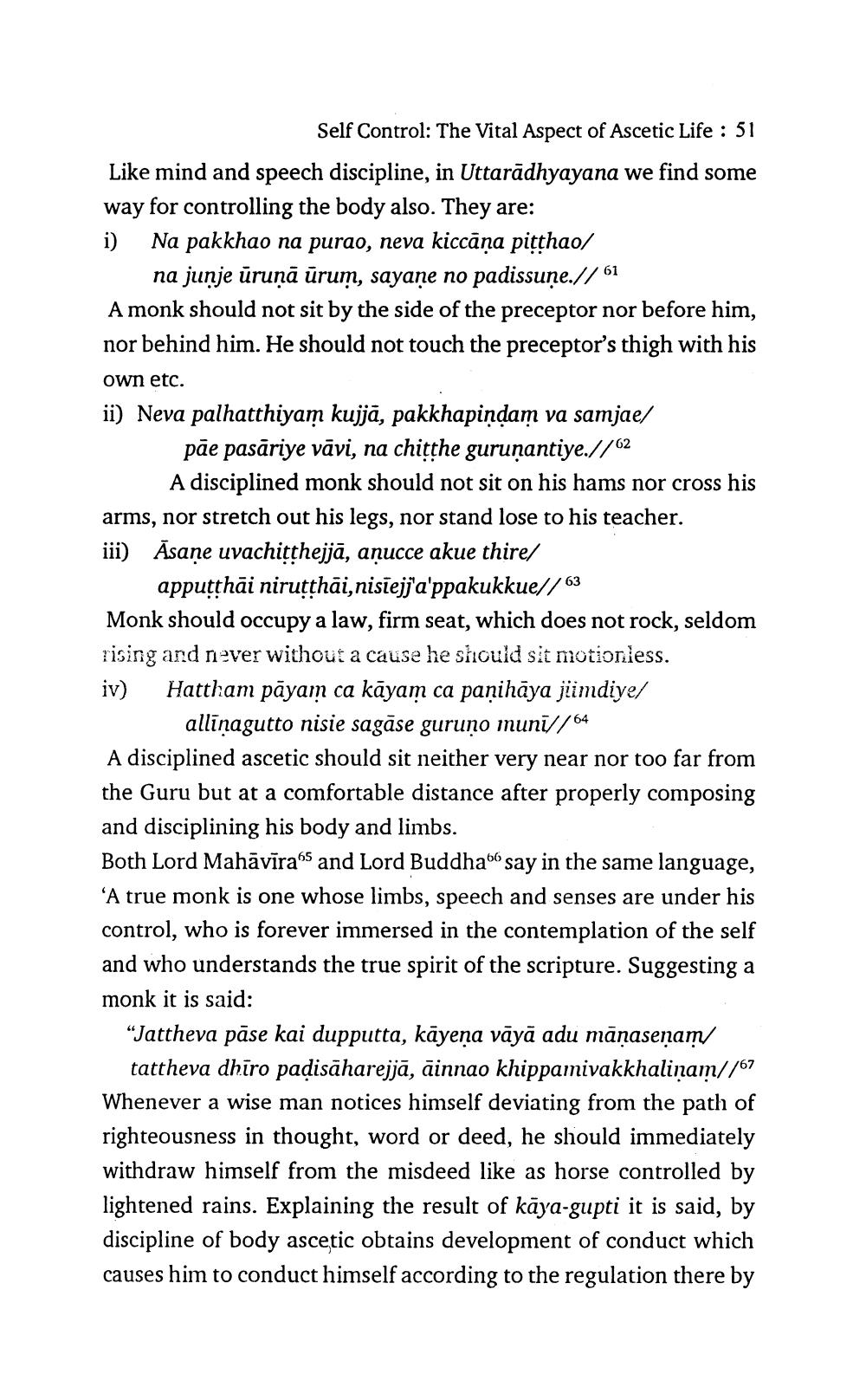________________
Self Control: The Vital Aspect of Ascetic Life : 51 Like mind and speech discipline, in Uttarādhyayana we find some way for controlling the body also. They are: i) Na pakkhao na purao, neva kiccāņa pitthao/
na junje ūruņā ūrum, sayaņe no padissuņe.// 61 A monk should not sit by the side of the preceptor nor before him, nor behind him. He should not touch the preceptor's thigh with his own etc. ii) Neva palhatthiyam kujjā, pakkhapindam va samjael
pāe pasāriye vāvi, na chiţthe guruşantiye.//02
A disciplined monk should not sit on his hams nor cross his arms, nor stretch out his legs, nor stand lose to his teacher. iii) Āsaņe uvachitthejjā, anucce akue thire/
apputthāi nirutthāi,nisiejj'a'ppakukkue//63 Monk should occupy a law, firm seat, which does not rock, seldom rising and never without a cause he should sit motionless. iv) Hattham pāyam ca kāyam ca paņihāya jiimdiye/
allīņagutto nisie sagāse guruņo muni/64 A disciplined ascetic should sit neither very near nor too far from the Guru but at a comfortable distance after properly composing and disciplining his body and limbs. Both Lord Mahāvīra's and Lord Buddha" say in the same language, 'A true monk is one whose limbs, speech and senses are under his control, who is forever immersed in the contemplation of the self and who understands the true spirit of the scripture. Suggesting a monk it is said:
“Jattheva pāse kai dupputta, kāyeņa vāyā adu māṇasenam
tattheva dhīro paạisāharejjā, āinnao khippamivakkhaliņam//67 Whenever a wise man notices himself deviating from the path of righteousness in thought, word or deed, he should immediately withdraw himself from the misdeed like as horse controlled by lightened rains. Explaining the result of kāya-gupti it is said, by discipline of body ascetic obtains development of conduct which causes him to conduct himself according to the regulation there by




